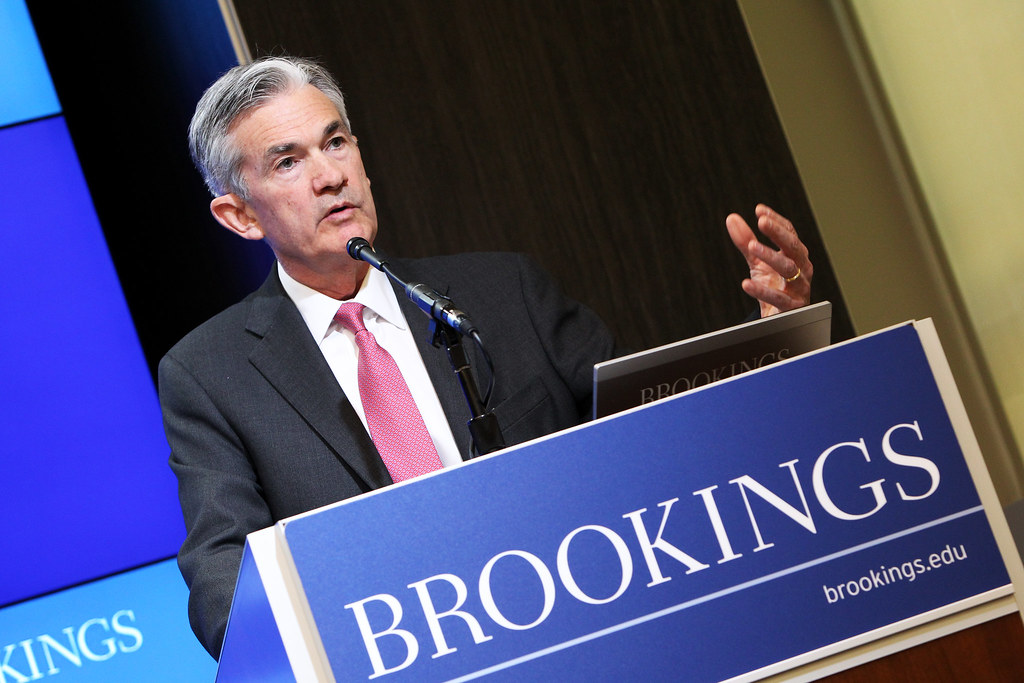Main Points:
- Federal Reserve Chair Jerome Powell signals no rush for further rate cuts, causing Bitcoin to drop by 3%.
- Traders lower expectations for a December rate cut, leading to market uncertainty.
- Interest rate decisions significantly impact Bitcoin and broader cryptocurrency markets.
- Inflation data and U.S. economic policies remain critical to market movements.
Bitcoin’s Response to Federal Reserve Policies
The cryptocurrency market reacted swiftly to recent remarks by Federal Reserve Chair Jerome Powell, who emphasized that the U.S. economy does not currently signal a need for urgent rate cuts. As Powell spoke at an event in Dallas on November 14, Bitcoin’s price fell by approximately 3%, reaching $86,979 before recovering slightly to $88,100.
Powell’s statements followed a period of aggressive monetary easing, including rate cuts of 50 and 25 basis points in September and November, respectively. With the next Federal Reserve meeting scheduled for December 18, the market is bracing for further developments that could shape the future trajectory of cryptocurrencies.
Economic Stability and Powell’s Cautious Approach
Jerome Powell highlighted that the U.S. economy’s resilience allows policymakers to proceed cautiously. He emphasized that future rate decisions will depend on incoming economic data and evolving forecasts. This stance contrasts with market expectations for continued rate reductions, reflecting the Federal Reserve’s measured approach.
This announcement comes amidst mixed economic signals, including slightly higher-than-expected inflation data. The U.S. Producer Price Index (PPI) for October rose by 2.4% year-on-year, slightly exceeding the forecast of 2.3%. These figures suggest that inflation is relatively stable, reducing the urgency for immediate monetary intervention.

The Relationship Between Interest Rates and Bitcoin
Interest rates are a critical factor influencing Bitcoin’s price. Lower interest rates generally reduce the appeal of traditional safe-haven assets like bonds and fixed deposits, prompting investors to explore higher-risk alternatives such as Bitcoin and technology stocks. Conversely, higher rates tend to dampen the appetite for riskier investments, as they increase the attractiveness of traditional financial instruments.
Traders’ confidence in a December rate cut has dwindled, with the likelihood of a 25-basis-point reduction dropping to 59%, according to data shared by The Kobessi Letter. This shift in sentiment has contributed to increased volatility in cryptocurrency markets, as Bitcoin investors reassess their strategies.
Inflation and Its Ripple Effects on the Market
Inflation remains a focal point for both traditional and cryptocurrency markets. While October’s inflation data was slightly above expectations, it was not significant enough to warrant immediate action from the Federal Reserve. Powell’s cautious stance suggests that the central bank is closely monitoring economic indicators to avoid premature decisions.
In the context of cryptocurrency, inflation impacts the perceived value of Bitcoin as a hedge against economic instability. When inflationary pressures rise, Bitcoin often gains traction as a decentralized alternative to fiat currencies. However, the current moderate inflation levels offer little support for this narrative.
Political and Economic Policies Under Scrutiny
The broader economic landscape, including policy decisions under the Trump administration, continues to influence market dynamics. Policies favoring business growth—such as corporate tax cuts and deregulation—may bolster economic expansion and inflation. On the other hand, measures like tariffs, trade wars, and restrictive immigration policies could lead to higher interest rates, affecting investor sentiment.
Prominent economist Nouriel Roubini weighed in on these issues, highlighting the dual impact of these policies. While pro-business initiatives could stimulate growth, protectionist measures might increase borrowing costs, creating headwinds for both traditional and cryptocurrency markets.
Bitcoin’s Role in a Shifting Economic Landscape
Bitcoin’s appeal as an investment vehicle lies in its potential to act as a hedge against traditional financial instability. However, its volatility makes it highly sensitive to macroeconomic factors, including Federal Reserve policies, inflation data, and broader geopolitical developments.
The cryptocurrency’s recent decline underscores the interconnectedness between traditional financial systems and digital assets. As the Federal Reserve signals a slower pace of monetary easing, Bitcoin’s path forward becomes increasingly tied to external economic conditions.
Navigating Market Uncertainty
The Federal Reserve’s cautious approach, coupled with moderate inflation data and evolving U.S. economic policies, has introduced significant uncertainty into cryptocurrency markets. While Bitcoin remains an attractive option for investors seeking alternatives to traditional assets, its performance will depend heavily on future interest rate decisions and broader economic indicators.
As the December Federal Reserve meeting approaches, traders and investors will be watching closely for any signs of a policy shift. For now, the cryptocurrency market must navigate a complex web of factors, balancing optimism for long-term growth with short-term volatility.


